From Myanmar, with blood: The Singaporean fighting tradition to take the martial art of lethwei to the world
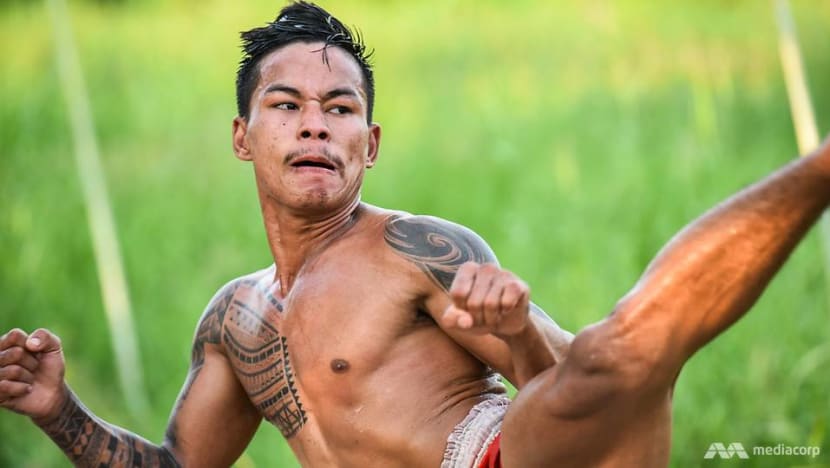
Lethwei is considered by some to be the world's most brutal martial art. (Photo: Jack Board)
YANGON: The young men - some just boys - are lean and muscular. Sweat drips off them as they jostle and jab in the fading light. They cast shadows on the rough bitumen, which acts as their training ground. Frequently, they stop their practice and step clear of the road as a motorcycle or car passes through.
Nearby, there is a stench of stagnant water, and maybe something worse - at odds with the quaint paddy fields that stretch to the horizon behind the fighters. They skip rope and pound punching bags without complaint though.
They are tougher than that.
This is the New White Blood club in Shwe Pauk Kan township on the outskirts of Yangon. Its members are a motley assortment of aspiring young athletes. Their pursuit of choice is considered by some to be the most brutal martial art in the world: Lethwei.
“We are familiar with blood. I bleed whenever I am in the ring. I also injure my opponent and make him bleed too,” said one of the fighters, Thway Thit Maung.
In Myanmar, a fight is taking place within the sport of lethwei itself. One between those who want to overhaul its traditions and take it to a global audience and those who want this ancient practice to be respected and go unchanged. While this battle of philosophies may not be as vicious as the sport's customary blows in the ring, it has threatened to divide its custodians.
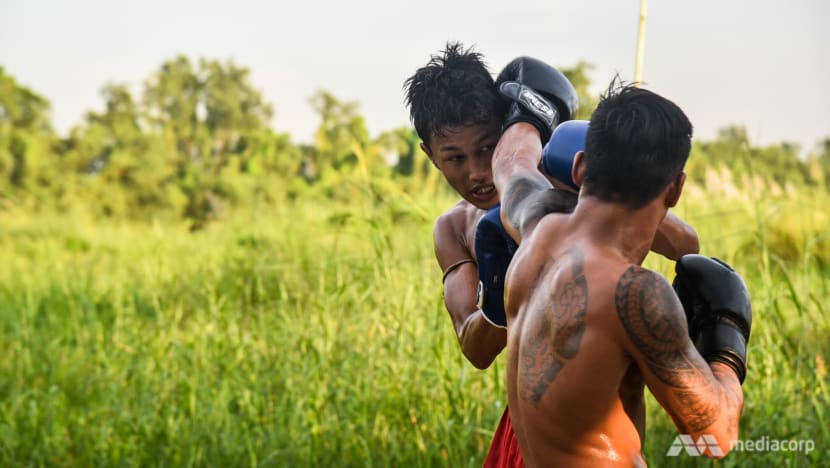
Lethwei is known as the Art of Nine Limbs, a striking sport that dates back to the Bagan Empire, where it was developed as a weapon of war. In traditional lethwei, there are few rules or limitations, where the headbutt is a unique tool in a fighter’s arsenal and blood is spilled freely. It is bareknuckle, hand-to-hand combat in one of its purest forms.
For centuries, the sport has mostly stayed the same. It has been a typically rural pursuit elevated during ethnic festivals and celebrations and has historically been all but unknown outside Myanmar.
But lethwei’s popularity is exploding globally. It is now available and keenly viewed on one of the world’s most prominent dedicated martial arts channels, UFC Fight Pass. And one of the people at the centre of its expanding appeal is a Singaporean.
Gerald Ng is the CEO of World Lethwei Championship (WLC), a group founded in 2015 to take the sport to a global audience. Since then, WLC has held nine showcase events in Myanmar, drawing the country’s biggest names and overseas challengers.
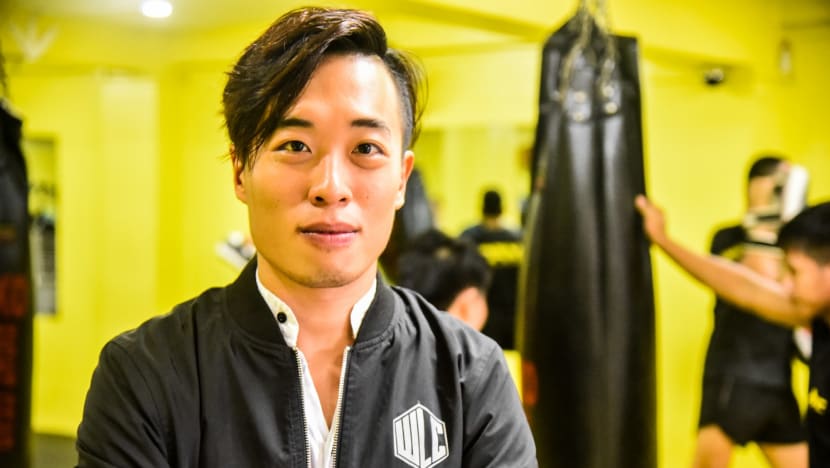
Ng is a strong proponent of maintaining the cultural values of lethwei as its reach expands. At WLC events, traditional music booms around packed stadiums, while fighters and ring girls wear ethnic dress. At the same time, he says, it is tradition that has held lethwei back.
His reasoning is double-pronged: The demands of contemporary broadcasting events and athlete safety.
Knockouts are the key to success in this sport. In normal lethwei bouts, unless one fighter knocks their opponent out, and that fighter cannot continue, it will result in a draw. And even if a fighter is knocked unconscious, he can be given a two-minute time out to be woken up, recover and step back into the ring. Both of these rules have been scrapped by WLC and it has introduced a decisive point-scoring system, strict concussion rules and new powers for ringside doctors to stop fights.
It is an issue that has sparked much debate in recent times in Muay Thai - or Thai boxing - circles as research illuminated the dangers of concussion, particularly among young fighters, prompting calls for rule changes and age limits.
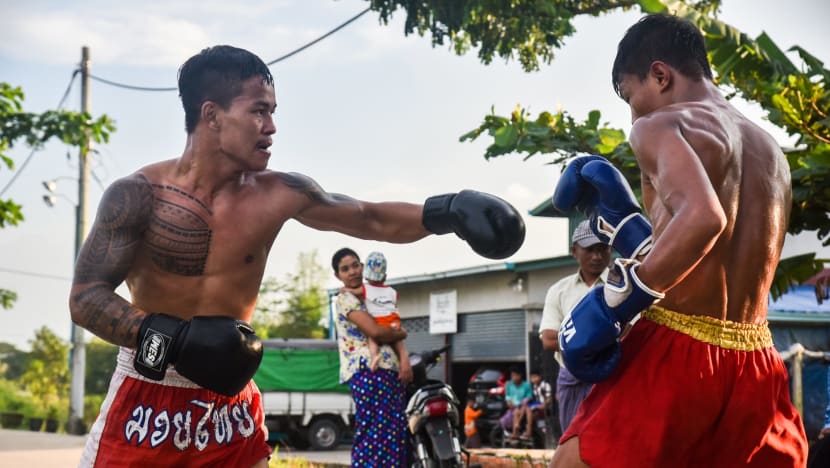
“I think for lethwei to go mainstream, you have to make it palatable for a mainstream audience. Part of doing that is to ensure the safety of the fighters. And we can’t have an entire four-hour fight card and everything ends in a draw,” Ng said.
“I think it was a huge controversy when we first started our events. If you spoke to any gym owner then they’d probably say ‘these guys are killing our sport’. I guess they didn't realise the vision we had.
“There’s always going to be a place for the traditional way of doing things. But for international exposure we have to adapt. Collectively, they felt we were trying to change the sport just for the sake of change,” he said.
As Ng and the WLC embarked on an overhaul of lethwei, some traditionalists were fuming.
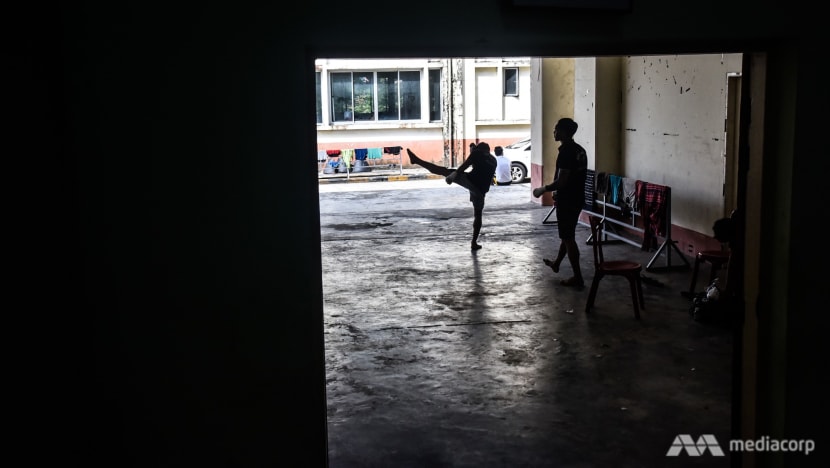
A STRIKING CHESS MATCH
The day after their dusk training session, fighters from New White Blood are in preparation for a showcase event. Two from their ranks will enter the ring in an exhibition for visiting Japanese guests.
Today, these will be fights with old school rules.
The promoter here is Wunna, the managing director of Myanmar Martial Arts Group. He has been trying to spread lethwei himself, arranging regular bouts overseas. He is also a strong voice against WLC and the changes that he believes betray the essence of lethwei as a fundamentally violent and uncompromising martial art.
“We have to use our unique and different rules. And these rules are not freshly invented. They have been applied in lethwei since the start and it is our tradition,” he said. “I don’t believe lethwei can be successfully exported with a score system.”
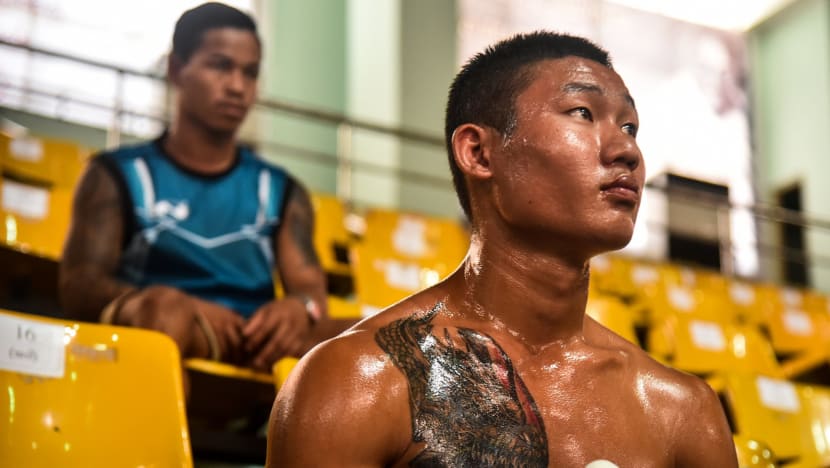
For a teenager from New White Blood, this is a rare chance at a proper fight with prize money. He has his hands wrapped and enters the ring to a cacophony of Burmese music, performed live by musicians perched high up in the grandstand.
His opponent is also young, from Shan state in the country’s north. Both are aggressive and the blows they land early are savage, bare knuckles into the face and ribs. Blood drips onto the canvas from lacerations to both fighters’ faces.
The second bout involving is even more intense as two more experienced athletes do battle. It is akin to a striking chess match, each looking for a killer blow as they grapple amid flurries of kicks and elbows.
But after three rounds, there is no knockout in either fight, and as per tradition, it also means there are no victors.
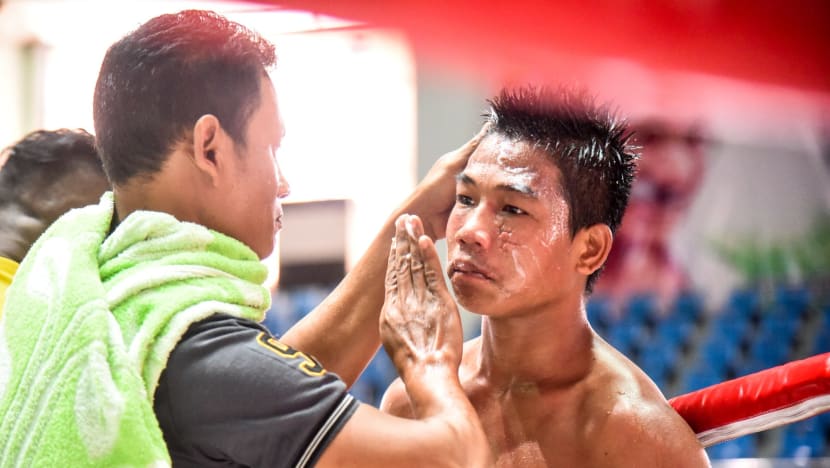
Yoshinuki Nakamura from the International Lethwei Federation Japan is in attendance. He insists that traditional lethwei rules are what make the sport unique and marketable in his home country. But having draws is a problem.
“I understand the tradition side of things. But we have a lot of martial arts in Japan and people want to know who wins and who loses. The Japan audience will be disappointed,” he said after the two showcase bouts.
It is the type of comment that Gerald Ng understands and wants to seize upon as WLC looks to conquer its own new markets. In 2020, he said, there will be broadcast fights held in the United States, Japan and Cambodia, the first time WLC will have taken its product outside Myanmar.
“It has already been changed forever. it’s just a matter of how far it can go,” Ng said. “Can it become the third largest martial art in the world? Or the second? In the past no one has had a proper business model. We’re trying to change that and show that there’s value.”

‘STUCK IN THE STONE AGE’
Yangon Fight Club is a local byproduct of increased interest in lethwei. On this Tuesday evening the small downtown gym is full of an array of participants - young Burmese, foreigners, women. Many of the trainers here can make a living coaching newcomers, while setting their sights on WLC.
The gym’s owner is Jason Maung, who was drawn to the industry in 2017 in the hope of promoting the sport. He sees change as progress and exposure as opportunity.
“I agree with the way WLC is doing things. They look after the fighter. That’s the most important thing,” he said. “A lot of my fighters are young guys and they’re happy with it. They’re the new generation. Tradition is important but sometimes there needs to be change or we’ll be stuck in the stone age.

“My head coach has sent an opponent to hospital twice and they were both draws. He beat the guy up so bad, but the guy just kept getting up. That’s considered a draw. To be honest, it’s brutal and it’s probably one part of lethwei that I don’t agree with.”
That coach, named Ye Yint Aung, has 66 fights to his name, including two for One Championship, the Singapore based martial arts media group. In a country where lethwei is highly respected, initially, his mother was his biggest critic, saying he was a fool to step into the “killing field” of the lethwei ring.
Now, he sees the possibilities of a professional career. “I, like other fighters, want money and success,” he said.
Traditional gyms, meantime, have found themselves at a crossroad. With change hovering, Thiha, the principal gym trainer at New White Blood club says he has no choice about what rules his fighters participate with, new or old.
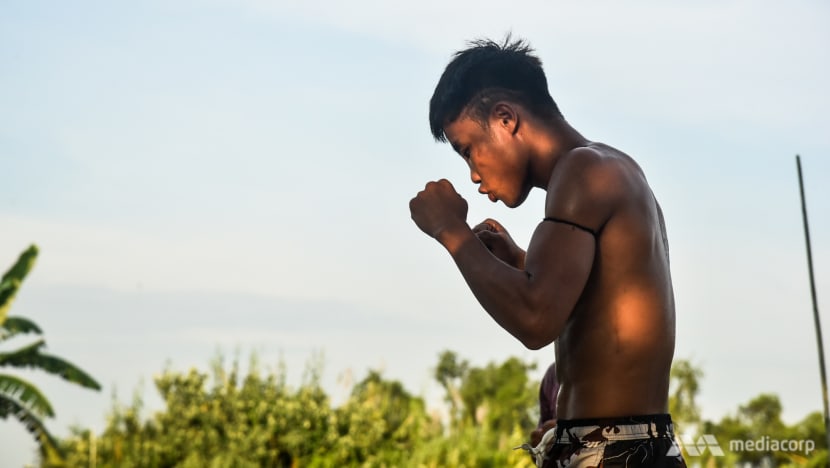
“Given the financial situation, I can’t tell my fighters to fight only with the KO system or the score system. They would fight every time they have a chance to fight, no matter what,” he said.
But, he admits, if the sports turns soft, it will lose its longtime supporters. “Burmese fans like the brutal fight very much,” he said. “If the fight is not intense, fans shout at the athletes and throw water. There is no way our traditional KO system disappears.”
Even advocates for WLC standards like Jason Maung can agree with that. “I don’t see it changing in my lifetime to be honest. But we’ve got to start somewhere and the WLC is like the first step,” he said.
“The Burmese like to hold onto traditions, whether they be good or bad.”
Additional reporting by Kyaw Ye Lynn.















